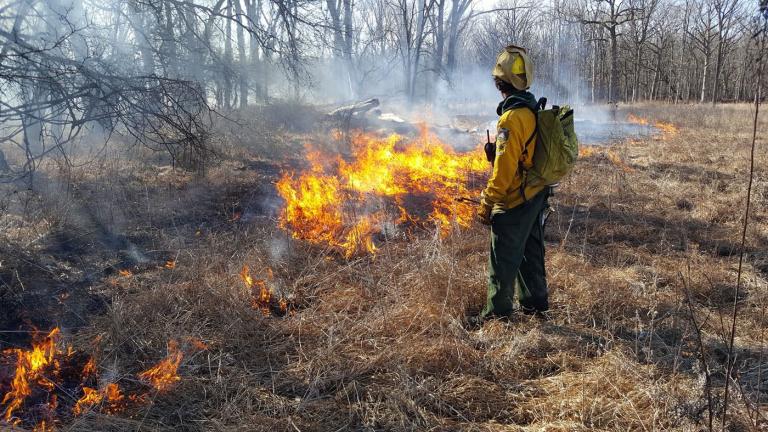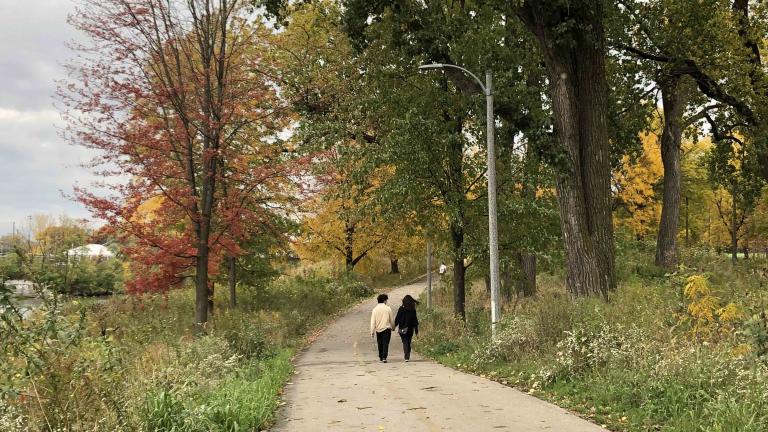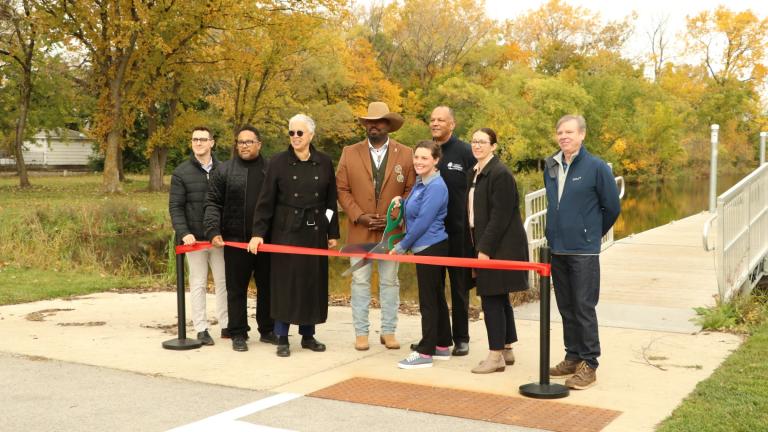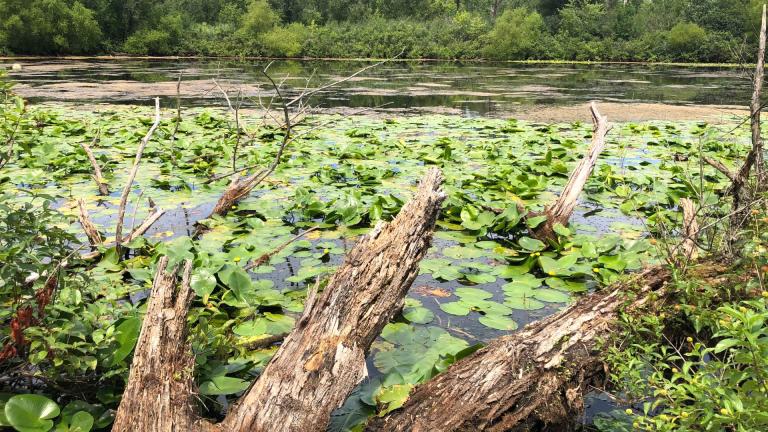Two agencies tasked with maintaining Chicago’s natural areas are creatively reimagining uses for invasive tree species and native trees infected with invasive insect species.
The Cook County Forest Preserve’s “Woodworking with Invasives” program gives volunteers the chance to cut down invasive European buckthorn trees and carve them into works of art or useful tools, like walking sticks.
“When you start cutting it, right away, it’s fairly soft,” said Cook County Forest Preserve program coordinator Tim Mondl. “We only use fresh-cut in our programs. The longer you let it dry out, the harder the wood becomes.”
European buckthorn is a type of small, non-native tree originally brought to North America in the 1800s as an ornamental plant. Since then, the invasive species – which is illegal to sell in Illinois – has threatened the Chicago area’s biodiversity: European buckthorn accounts for 36% of all trees in the seven-county region surrounding Chicago, according to a 2020 Chicago Region Tree Census by Morton Arboretum.
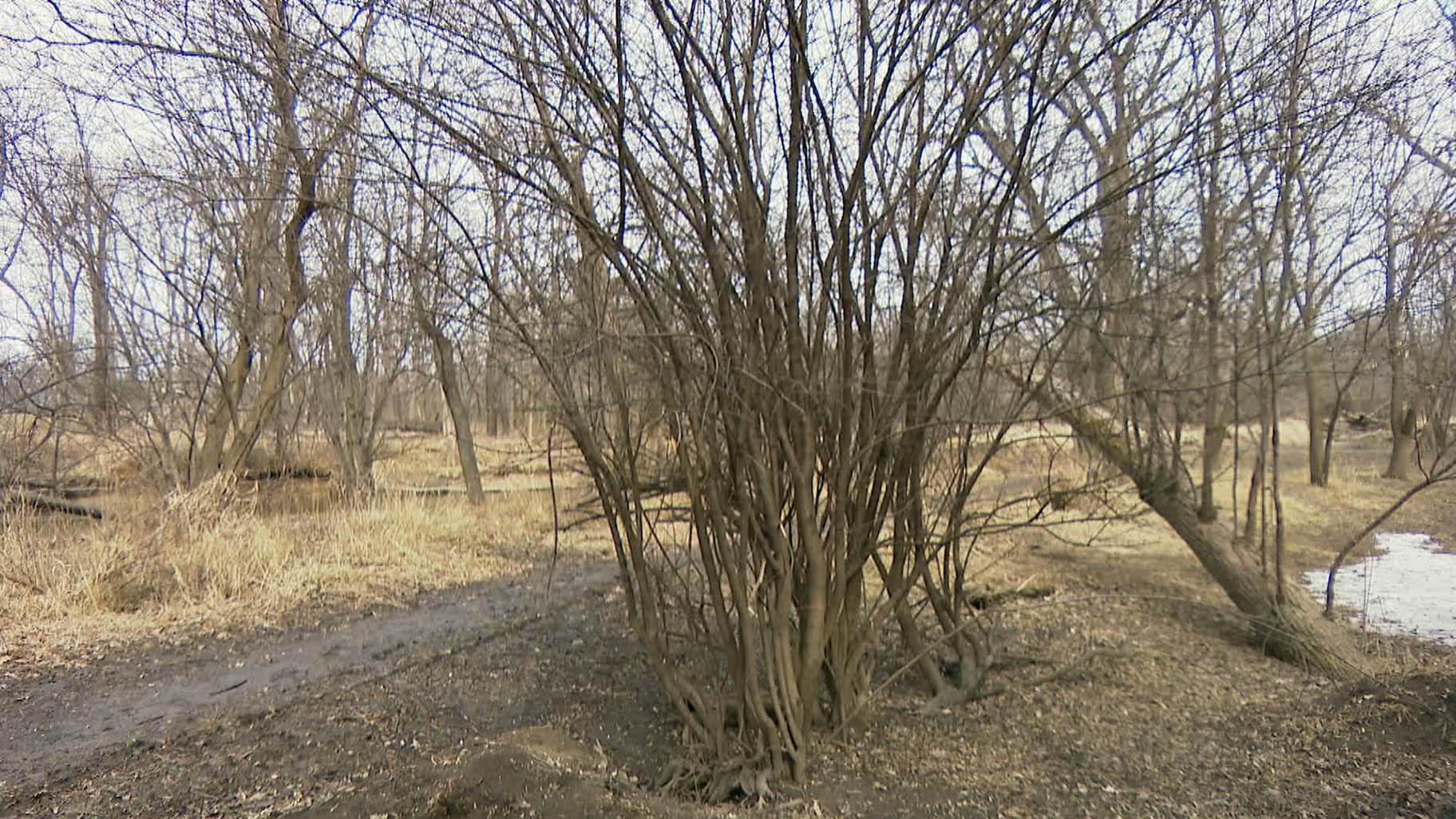 A thicket of European buckthorn, the most prevalent invasive tree species in Chicago, grows in Caldwell Woods on March 4, 2022. (WTTW News)
A thicket of European buckthorn, the most prevalent invasive tree species in Chicago, grows in Caldwell Woods on March 4, 2022. (WTTW News)
Cook County Forest Preserve wildlife specialist Kim Kalosky said buckthorn diminished the growth of other plants, trees and grasses, keeping native species like young oak trees from thriving.
“It does grow in very dense thickets and it’s very shade-tolerant,” Kalosky said. “So oftentimes we have a buckthorn thicket and there’s either completely bare soil underneath it because it’s shaded out everything else from growing or only buckthorn seedlings can tolerate that dense of shade.”
Kalosky said the Cook County Forest Preserve has removed 5,000 acres of invasive woody shrubs since she joined the agency eight years ago.
Across Chicago’s parks, artists have carved 41 dead trees into different works of art as part of the Chicago Tree Project, a partnership between the Chicago Park District and nonprofit Chicago Sculptures International. The program came about in 2014 while thousands of ash trees were dying due to infection of the emerald ash borer.
The larvae of the invasive insect, which was first discovered in Michigan in 2002, bore through the vascular system of ash trees, killing them within a few years. The estimated number of standing ash trees in the Chicago region has decreased by 46%, according to the 2020 Tree Census.
In 2017, Janet Austin president of Chicago Sculptures International, carved a dead ash tree in Palmer Square Park with designs representing the maze-like trails emerald ash borer larvae create under bark.
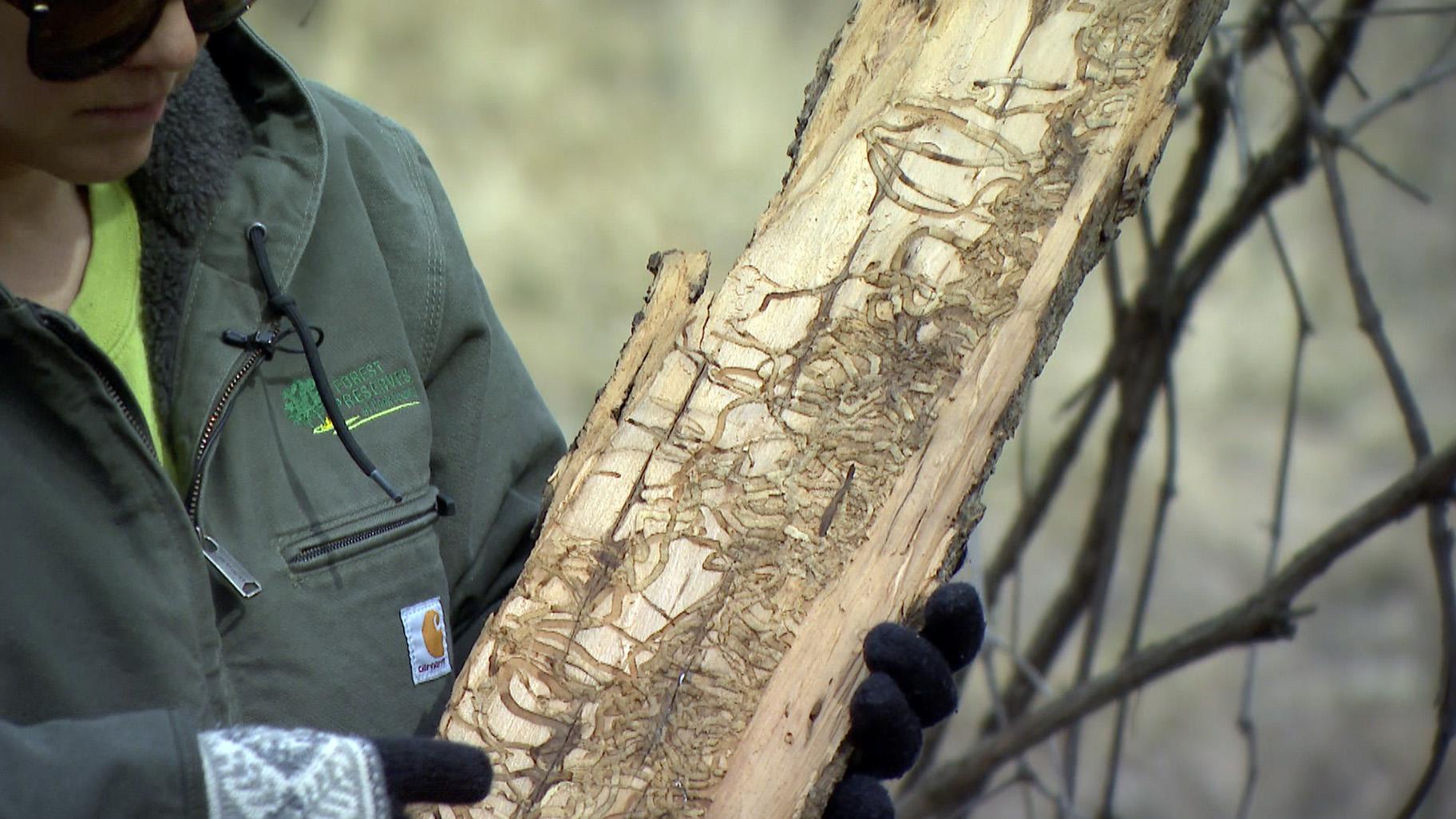 Cook County Forest Preserve wildlife specialist Kim Kalosky shows the trails made by emerald ash borer larvae on the bark of an ash tree in Caldwell Woods on March 4, 2022. (WTTW News)
Cook County Forest Preserve wildlife specialist Kim Kalosky shows the trails made by emerald ash borer larvae on the bark of an ash tree in Caldwell Woods on March 4, 2022. (WTTW News)
“I think by allowing the pieces to live in the world a little bit longer, they’re still providing nutrients in the ground, places for animals,” Austin said. “They’re highlighting the fact that these trees are changing and they’ll at least be a piece of artwork for the next few years.”
A Cook County Forest Preserve representative said the agency is scheduling its next “Woodworking with Invasives” event for July 21, 5 p.m. at Rolling Knolls Forest Preserve in Elgin, Illinois.



